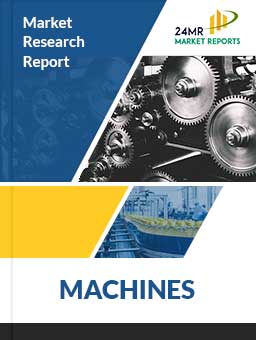The Heavy Equipment Training Simulator market focuses on providing specialized software and hardware solutions designed to simulate the operation of heavy machinery in a controlled and safe environment. These simulators are used primarily for training operators in industries like construction, agriculture, and mining, offering a cost-effective and risk-free alternative to on-the-job training. They enable trainees to practice handling real-world scenarios, including hazardous conditions, without the risks associated with operating actual heavy equipment.
These simulators typically consist of virtual environments that replicate the operational characteristics of machinery, offering a realistic experience. Key products in this market include training systems for various types of equipment, including cranes, bulldozers, excavators, and agricultural machinery.
Market Size
The global Heavy Equipment Training Simulator market was valued at approximately USD 348 million in 2024, with projections indicating it will reach USD 725.18 million by 2032, reflecting a robust compound annual growth rate (CAGR) of 8.50%.
This growth is driven by increasing demand for safe and efficient training solutions across industries like construction, agriculture, and mining, where heavy machinery is prevalent. The market has experienced consistent growth due to the rising focus on workplace safety, the need to reduce operational costs, and the increasing demand for skilled operators in industries that use heavy machinery.
Key statistics:
-
2024 market size: USD 348 million
To know more about market statistics, Download a FREE Sample copy
-
2032 projected market size: USD 725.18 million
-
CAGR: 8.50%
Market Dynamics (Drivers, Restraints, Opportunities, and Challenges)
Drivers
-
Enhanced Safety Measures: Simulators provide a safe environment for operators to learn how to handle complex machinery without the risks associated with on-the-job training.
-
Cost Efficiency: By reducing the need for physical equipment and minimizing training downtime, simulators help organizations save money.
-
Technological Advancements: The integration of advanced technologies, such as virtual reality (VR), augmented reality (AR), and artificial intelligence (AI), has enhanced the realism and effectiveness of training simulators.
-
Workforce Development: With industries facing a shortage of skilled operators, simulators are a cost-effective way to train new employees and improve existing workforce capabilities.
Restraints
-
High Initial Investment: Although training simulators provide long-term savings, the upfront cost for purchasing and maintaining these systems can be high, which may deter some businesses.
-
Technological Complexity: The need for constant software and hardware updates to keep simulators up to date with the latest machinery and operating conditions can be challenging for companies.
-
Limited Awareness: In some regions, there is limited awareness about the benefits of training simulators, which may slow market growth.
Opportunities
-
Expanding Markets in Emerging Economies: Countries with rapidly growing infrastructure development and mining industries, such as India and Brazil, offer significant opportunities for the adoption of training simulators.
-
Integration with Real-Time Data: The opportunity to incorporate real-time data from machinery into simulators to provide operators with more realistic training environments.
-
Environmental Concerns: As industries seek to reduce their environmental footprints, simulators present an eco-friendly alternative to using actual machinery for training, helping businesses meet sustainability goals.
Challenges
-
Technological Gaps: Keeping pace with the rapid evolution of machinery technology is a challenge for simulator manufacturers.
-
Acceptance by Traditional Operators: Some experienced operators may resist the shift from traditional training methods to virtual simulators due to skepticism about the effectiveness of simulated training.
Regional Analysis
North America
North America holds a dominant position in the global Heavy Equipment Training Simulator market, with the United States leading the region. The North American market was valued at USD 104.37 million in 2024 and is expected to grow at a CAGR of 7.29% from 2025 to 2032. The growth is driven by the region's advanced infrastructure, construction, and mining industries, all of which require a steady supply of trained operators. Moreover, the emphasis on worker safety and operational efficiency has accelerated the adoption of training simulators.
Europe
Europe is another significant market for heavy equipment training simulators, with a robust industrial sector across various countries such as Germany, the UK, and France. The demand is primarily driven by the region's stringent safety regulations and growing investments in construction and mining projects. The market in Europe is expected to grow steadily, with companies increasingly adopting simulators for their training programs.
Asia-Pacific
Asia-Pacific is poised for the fastest growth, driven by rapid infrastructure development, particularly in countries like China, India, and Japan. The region's heavy reliance on construction and mining sectors makes it a key market for training simulators. The Asia-Pacific market is projected to experience significant growth in the coming years, with emerging economies offering untapped potential for market players.
South America
South America, particularly countries like Brazil and Argentina, is experiencing increasing demand for training simulators due to growing infrastructure projects in the region. As the construction and mining sectors expand, there is a greater need for skilled operators, providing opportunities for the adoption of simulators.
The Middle East and Africa
The Middle East and Africa are expected to witness moderate growth, with countries like Saudi Arabia and South Africa investing in heavy equipment simulators for training purposes. The demand in this region is primarily driven by the construction and mining industries, which are integral to the region’s economy.
Competitor Analysis (in brief)
The Heavy Equipment Training Simulator market is competitive, with several key players offering advanced training solutions. Notable companies in this market include:
-
Simlog: A leading provider of simulation-based training systems for heavy equipment.
-
Caterpillar: One of the largest manufacturers of construction equipment, offering advanced training simulators.
-
CM Labs Simulations: Known for its comprehensive training solutions across various types of heavy equipment.
-
Tech-Labs: A key player in the development of simulation technology for the training sector.
-
Vista Training: Focuses on safety and efficiency in heavy equipment training simulators.
These companies, along with others like John Deere, Mevea, and ForgeFX Simulations, are competing to offer the most advanced and cost-effective solutions to meet the growing demand for skilled operators in the construction, agriculture, and mining industries.
Global Heavy Equipment Training Simulator: Market Segmentation Analysis
Heavy Equipment Training Simulator Market provides a deep insight into the global Heavy Equipment Training Simulator market, covering all its essential aspects. This ranges from a macro overview of the market to micro details of the market size, competitive landscape, development trends, niche markets, key drivers, challenges, SWOT analysis, value chain analysis, etc.
The analysis helps the reader to shape the competition within the industries and strategies for the competitive environment to enhance the potential profit. Furthermore, it provides a simple framework for evaluating and assessing the position of the business organization. The report structure also focuses on the competitive landscape of the Global Heavy Equipment Training Simulator Market. Heavy Equipment Training Simulator Market introduces in detail the market share, market performance, product situation, and operation situation of the main players, which helps the readers in the industry identify the main competitors and deeply understand the competition pattern of the market.
In a word, Heavy Equipment Training Simulator Market is a must-read for industry players, investors, researchers, consultants, business strategists, and all those who have any kind of stake or are planning to foray into the Heavy Equipment Training Simulator market in any manner.
Market Segmentation (by Application)
- Business
- Training School
Market Segmentation (by Type)
- Construction Equipment Training Simulator
- Agricultural Equipment Training Simulator
- Mining Equipment Training Simulator
Key Company
- Simlog
- Caterpillar
- CM Labs Simulations
- Tech-Labs
- Acreos
- Vista Training
- Mevea
- ForgeFX Simulations
- John Deere
- Simsoft
- Xuzhou Longshine Intelligent Technology Co.,Ltd.
- Foshan World Safety Technology Co. Ltd.
- Wenzhou Choieo Education Technology Co.,Ltd
Geographic Segmentation
- North America (USA, Canada, Mexico)
- Europe (Germany, UK, France, Russia, Italy, Rest of Europe)
- Asia-Pacific (China, Japan, South Korea, India, Southeast Asia, Rest of Asia-Pacific)
- South America (Brazil, Argentina, Columbia, Rest of South America)
- The Middle East and Africa (Saudi Arabia, UAE, Egypt, Nigeria, South Africa, Rest of MEA)
FAQ Section
What is the current market size of the Heavy Equipment Training Simulator market?
- The global Heavy Equipment Training Simulator market is valued at USD 348 million in 2024 and is projected to reach USD 725.18 million by 2032.
Which are the key companies operating in the Heavy Equipment Training Simulator market?
- Key companies in the market include Simlog, Caterpillar, CM Labs Simulations, Tech-Labs, Acreos, and Vista Training, among others.
What are the key growth drivers in the Heavy Equipment Training Simulator market?
- Growth drivers include enhanced safety measures, cost efficiency, technological advancements, and the increasing need for workforce development.
Which regions dominate the Heavy Equipment Training Simulator market?
- North America, Europe, and Asia-Pacific are the dominant regions in the market, with North America leading in market share.
What are the emerging trends in the Heavy Equipment Training Simulator market?
- Emerging trends include the integration of virtual reality (VR) and augmented reality (AR), as well as the adoption of real-time data in training simulators to create more realistic experiences for operators.
Key Benefits of This Market Research:
- Industry drivers, restraints, and opportunities covered in the study
- Neutral perspective on the market performance
- Recent industry trends and developments
- Competitive landscape & strategies of key players
- Potential & niche segments and regions exhibiting promising growth covered
- Historical, current, and projected market size, in terms of value
- In-depth analysis of the Heavy Equipment Training Simulator Market
- Overview of the regional outlook of the Heavy Equipment Training Simulator Market:
Key Reasons to Buy this Report:
- Access to date statistics compiled by our researchers. These provide you with historical and forecast data, which is analyzed to tell you why your market is set to change
- This enables you to anticipate market changes to remain ahead of your competitors
- You will be able to copy data from the Excel spreadsheet straight into your marketing plans, business presentations, or other strategic documents
- The concise analysis, clear graph, and table format will enable you to pinpoint the information you require quickly
- Provision of market value data for each segment and sub-segment
- Indicates the region and segment that is expected to witness the fastest growth as well as to dominate the market
- Analysis by geography highlighting the consumption of the product/service in the region as well as indicating the factors that are affecting the market within each region
- Competitive landscape which incorporates the market ranking of the major players, along with new service/product launches, partnerships, business expansions, and acquisitions in the past five years of companies profiled
- Extensive company profiles comprising of company overview, company insights, product benchmarking, and SWOT analysis for the major market players



























